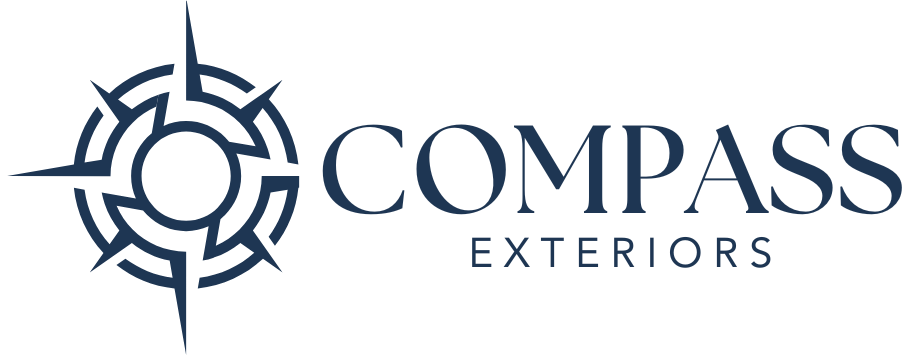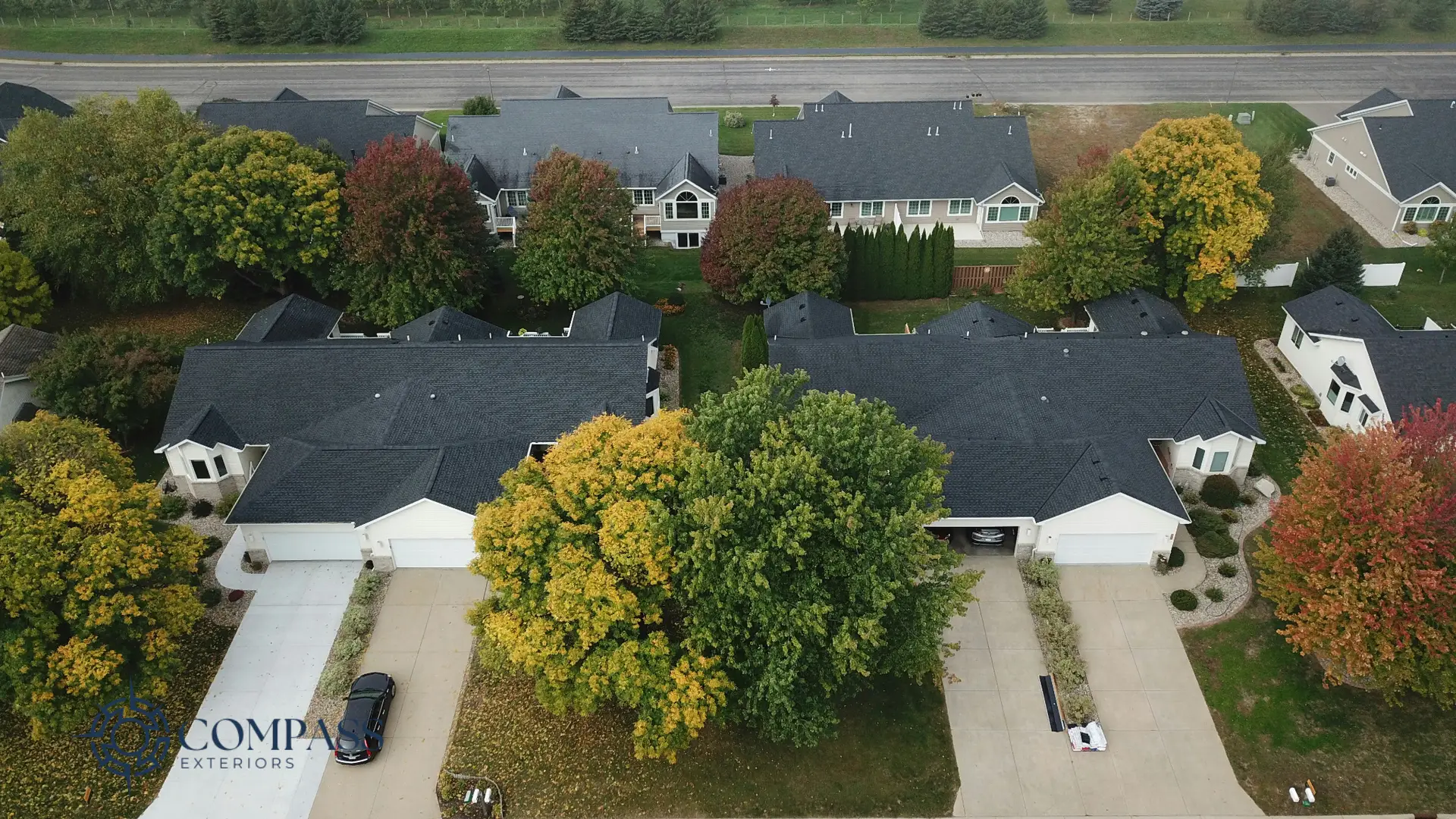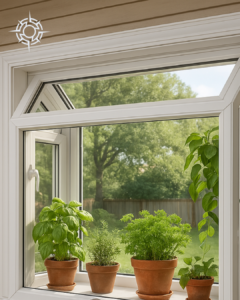Proper roof ventilation is crucial for maintaining the structural integrity and energy efficiency of your home. It extends the life of your roof, prevents moisture buildup that can lead to mold and wood rot, and helps regulate attic temperatures to reduce energy costs. However, unlike garages which often have simpler venting needs, roofs require a more complex system of vents to ensure adequate air flow. This article will guide you through the importance of roof ventilation, help you identify common issues arising from poor ventilation, and provide steps to ensure your roof is ventilated properly, protecting your home from potential damage.
The Importance of Proper Roof Ventilation
Roof ventilation plays a pivotal role in safeguarding your home from various environmental stresses. An adequately ventilated roof helps prevent the accumulation of heat and moisture in the attic, conditions that can cause significant damage over time. During the winter, proper ventilation prevents ice dams by maintaining a cool roof temperature, reducing the risk of water seeping under roof shingles and causing leaks. In summer, it expels hot air, helping to cool the house and reduce the burden on air conditioning systems. Moreover, consistent airflow from effective ventilation prevents the buildup of mold and mildew, which can compromise the structural integrity of your home and adversely affect indoor air quality.
Common Roof Ventilation Systems

Proper roof ventilation is achieved through a combination of different vent types, each designed to optimize airflow and temperature control in your attic and throughout your home. Understanding these systems is key to ensuring effective ventilation that safeguards your home’s integrity and efficiency.
Roof Vents
- Static Vents: Often called box vents or flat vents, these are installed at the highest points of the roof to allow rising hot air to escape naturally.
- Turbine Vents: These use wind power to pull air out of the attic. The spinning turbines create a vacuum that draws out the hot air, increasing air exchange effectively.
- Ridge Vents: Installed along the ridge of the roof, these vents run continuously along the peak, allowing for an even distribution of ventilation across the entire roof. They are barely visible and integrate well aesthetically with the roofline.
Gable Vents
- Location and Function: Positioned on the exterior wall at the peak of the gable ends, these allow for cross-ventilation in the attic.
- Use with Other Vents: Gable vents can be used in tandem with soffit vents to encourage natural air flow, but they might not be effective with ridge vents as they can disrupt the proper air flow from soffit to ridge.
Soffit Vents
- Under-Eave Vents: These are installed in the soffits or the underside of your roof’s eaves. They provide the intake part of the ventilation system, allowing cool, fresh air to enter the attic.
- Synergy with Ridge Vents: Soffit vents are often used in conjunction with ridge vents to ensure a continuous flow of air from the soffit, across the attic, and out through the ridge, which helps to cool the attic efficiently.
Additional Options
- Powered Attic Vents: Electrically powered, these vents use a motor to forcefully expel hot air from the attic. They are effective but can increase energy consumption.
- Skylight or Roof Windows: While primarily for natural light, they can be opened to enhance ventilation, especially in attic spaces used as living areas.
- Mechanical Ventilators: These can be installed to actively control the climate in your attic, equipped with humidistats and thermostats to manage moisture and temperature.
Choosing the Right Ventilation System
Selecting the correct type and combination of vents for your home depends on several factors including the architecture of your home, local climate, and specific roofing materials used. The balance between intake (provided by soffit vents) and exhaust (provided by ridge, turbine, or other roof vents) is crucial to creating an effective ventilation system. Consulting with a ventilation expert or a roofing specialist can provide tailored advice based on the unique aspects of your home to ensure optimal performance and protection.
Identifying Signs of Poor Roof Ventilation

Detecting inadequate roof ventilation is key to preventing long-term damage to your home. Here are some common signs and symptoms that indicate your roof may not be properly ventilated:
- Ice Dams in Winter: These occur when heat from the attic melts snow on the roof, which then refreezes at the eaves, creating a dam that prevents proper drainage. This can lead to water seeping under the shingles and into the home.
- Overheated Attics in Summer: If your attic is significantly hotter than the outside temperature during summer, it’s a sign that hot air isn’t being effectively expelled. This not only stresses your cooling system but can also shorten the lifespan of roofing materials.
- Moisture and Mold: Excessive moisture buildup in the attic can lead to the growth of mold and mildew. If you notice any musty odors or visible mold growth, it’s likely that your attic is poorly ventilated.
- Peeling Paint or Wallpaper: This can be caused by excessive moisture accumulating in the walls and attic, a common issue stemming from inadequate ventilation.
Regular checks for these signs can help you catch ventilation issues early, preventing more serious damage and expensive repairs. If you notice any of these problems, it might be time to reassess your attic’s ventilation system.
How to Check Roof Ventilation
Checking the effectiveness of your roof’s ventilation system involves a combination of visual inspections and measuring environmental conditions in your attic:
Visual Inspections
- Inspect Vents for Blockages: Check all types of vents for any signs of blockage by leaves, nests, or debris that could restrict airflow.
- Condition of Vents: Look for signs of damage or wear in roof, gable, and soffit vents. Ensure they are intact and properly secured.
Measuring Attic Conditions
- Use a Thermometer: Measure the temperature in your attic. It should not be significantly hotter than the outside temperature during summer or much warmer than your living spaces in winter.
- Hygrometer Use: Measure the humidity levels with a hygrometer. High humidity levels can indicate poor ventilation.
- Ideal Conditions: Typically, ideal attic conditions maintain a temperature close to the outside air and humidity levels that do not exceed 60%.
These steps will help you determine if your current ventilation system is effective or if improvements are necessary to protect your home’s structural integrity and comfort.
Measuring Attic Conditions
- Instructions on using thermometers and hygrometers to assess attic conditions.
- Explanation of ideal temperature and humidity levels to help homeowners gauge their attic’s ventilation needs.
Maintenance Tips
To ensure your roof ventilation system remains effective and efficient, regular maintenance is crucial. Here are some practical tips to keep your ventilation in top condition:
- Clear Debris Regularly: Inspect and clean roof, gable, and soffit vents periodically to remove any leaves, dirt, or other debris that might obstruct airflow.
- Check for Damage: After severe weather events, check your ventilation systems for any signs of damage or wear, such as bent, broken, or missing parts. Early detection and repair can prevent larger issues.
- Re-seal Vents: Reapply sealant around vent edges as needed to prevent water leaks and maintain an airtight seal. This is particularly important for roof and gable vents.
- Schedule Professional Inspections: Consider having a professional inspect your ventilation system annually. They can identify potential problems that might not be visible to the untrained eye and suggest specific maintenance or upgrades.
By adhering to these maintenance tips, you can prolong the lifespan of your roof ventilation system and ensure it continues to function effectively, safeguarding your home from ventilation-related issues.
When to Call a Professional
If during your inspections or maintenance routines you encounter any of the following issues, it’s time to contact an expert roofing contractor:
- Complex Blockages: If vents are blocked by nests, severe debris, or damage that cannot be easily cleared or repaired by you.
- Signs of Structural Damage: Noticeable sagging, water stains on the interior or exterior of your roof, or mold growth in the attic.
- Inefficient Ventilation Symptoms: Persistent issues such as ice dams or excessive heat in the attic despite clear vents.
Professionals like those at Compass Exteriors Remodeling have the expertise to diagnose and resolve complex ventilation issues effectively, ensuring your home remains safe and well-maintained.
Compass Exteriors: Minneapolis Roof Ventilation Experts
Proper roof ventilation is essential for maintaining the structural health of your home and ensuring energy efficiency. If you suspect your ventilation system may be compromised, or if you’re encountering persistent issues that DIY checks and maintenance can’t resolve, don’t hesitate to reach out for professional help. Compass Exteriors Remodeling specializes in assessing and repairing roof ventilation systems to prevent long-term damage and costly repairs. Contact us today to schedule an expert consultation. Ensure your home is protected by ensuring it’s properly ventilated—let Compass Exteriors help you maintain a safe, efficient, and comfortable living environment.











